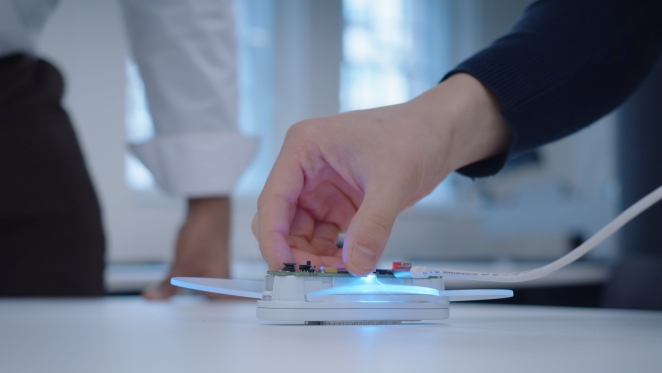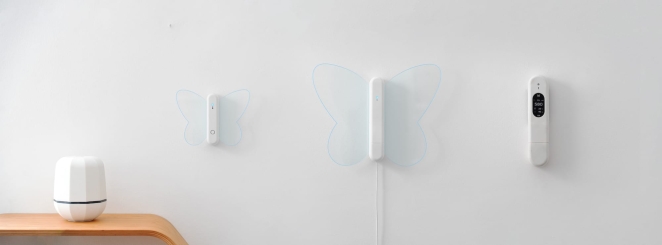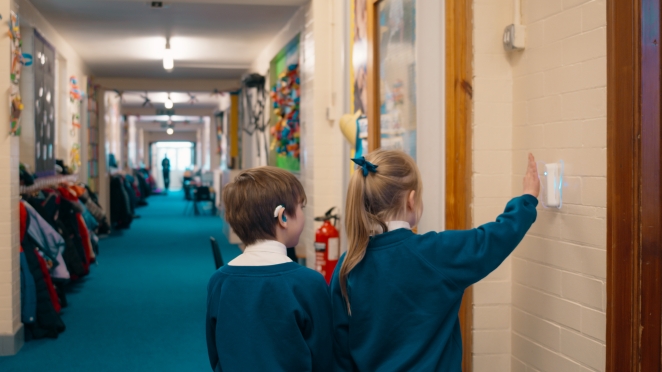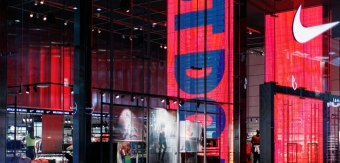Butterfly, a groundbreaking Indoor Air Quality (IAQ) monitoring system, recently emerged from its developmental cocoon after four years of development at Imperial College London and aims to set new industry standards.
The innovative and patented technology is poised to transform how indoor air quality is perceived and managed, raising the bar for sustainability, accuracy, and usability. For me, however, it’s the design of the thing that really caught my initial attention. I mean, juts look at it! We’re talking old-school Apple levels of effortless cool.
So, I decided to reach out to Ali Munro, the seasoned interior designer behind the project, to discover more about this gorgeous little device, how it could revolutionise indoor air quality, and the thought processes behind that impeccable design.

What inspired the development of the Butterfly and why did you choose the butterfly as its symbol?
The inspiration came from the fact that when butterflies are present it’s a sign of healthy air.
It was important to use a reference that connects to the quality of air and design products which are intuitive and distinctive in the world of technology.
Our devices also use colour to communicate as do butterflies!
How does the Butterfly system differentiate itself from other IAQ monitoring systems in the market?

We have developed a unique sensing chamber which ensures ultimate accuracy of measurements by controlling the sample airflow – we call it LaminAIR flow.
We have designed a Swap-Pod feature which provides for sensors to be easily re-calibrated for ongoing accuracy on an annual basis – this is literally ‘revolutionary’
Our GLOwing interface is an industry first which makes the Butterfly system ‘glanceable’ from a distance of +10m
Our sensors physically measure different levels of Particulate Matter including PM1, PM2.5, and PM10 whereas our competitors typically measure PM2.5 and then infer PM1 and PM10 which is much less accurate and transparent
Butterfly offers both Indoor and Outdoor Air Quality measurement on a location specific basis to provide 20/20 vision on the way an individual building ‘breathes’ – an industry first.
Because of Butterfly’s accuracy and reliability, it is being taken up as a new technology for Smart buildings which can trust its data to run their ventilation systems and therefore save on energy – up to 40% reduction which we believe is going to prove hugely impactful in the built environment.
How does the gloWING interface work? What do the different colours signify and how were they determined?
Colour is one of the most effective ways to communicate.
The Butterfly wings and e-ink display on the Antenna are engineered to glow when you wave at the devices. This is so you can see at a glance if the air quality has changed.
The colours are designed to be evocative and easy to read
Blue – indicates good air quality
( lime) Green – indicates moderate air quality
Amber – indicates attention required
What challenges did you encounter while deploying Butterfly in diverse buildings, especially the historic ones at Imperial College London?

We needed to address compliance so that the Imperial Estates team we confident that we would be enhancing student health and this meant a lot of testing and analysis of British and European standards on for instance CO2 which happily was successful.
Also there is a very dynamic population at the University with buildings such as lecture theatres changing from zero occupants to 300 people in the space of a few minutes which means Butterfly has to be able to act very rapidly
Further challenges include things like data security and simplicity of installing which again we have manged to design into the system – its super secure and super easy to install!
How does Butterfly integrate with existing Building Management Systems (BMS)? Is there a need for specific compatibility checks?
We wanted to make Butterfly as flexible as possible given the different levels of technology and connectivity across the range of building types, so we introduced our Hub called Chrysalis and equiped it to serve up to 20 monitors and then export their data to the BMS through any one of 4 channels – wifi, ethernet, LoRaWan or 4G which makes compatibility very straightforward.
Can you explain more about the Butterfly portal? What kind of data can users expect to see and how is the data visualised?

Sure, we designed and developed our own independent portal from scratch to ensure we had full control over all the features and could adapt it to ongoing client requirements. Its easy to access for approved users with secure logins and once logged, real time data is presented using simple colour coding and trends are shown over the past day, week, month etc so a user can see patterns and/or anomalies in their air quality, and therefore make the best decisions on managing their building.
Given the alarming statistics about IAQ's impact on health, how do you envision Butterfly contributing to mitigating this problem?
We think that Particulate Matter (particle pollution) is one of the biggest things to focus on in the next generation of building management. Most buildings that have any existing Air Quality controls will have CO2 sensors and these have been used for a long time to infer general air quality.
Unfortunately however that is wrong and the ability to now measure PM accurately using Butterfly has shown us that suppressing CO2 by flushing buildings with lots of outdoor air typically brings in an uncontrolled amount of PM which is directly linked to long term health problems – plus heating/cooling such air intake requires a lot of energy and so is very expensive.
With Butterfly we can control the way a building ‘breathes’ and therefore reduce PM for current occupants plus minimise energy consumption with impactful benefits on sustainability – itself therefore contributing to lower emissions and a fully circular outcome.
How did your backgrounds in product design and commercial interior design influence the development and aesthetics of Butterfly?

My background (as an Interior/ textile Designer) has given me an insight into how people relate to their surroundings, how important form, texture and colour are to the success of user experience
Nature is often an inspiration to my work - a connection to the subject in hand provides a narrative which is key to communicating the use of a design in an engaging way.
Haptic qualities are also essential to the user experience, along with softer, curved shapes to convey reassurance and warmth. So many tech products are hard edged.
Materials play a huge role in any design – so we have made choices for Butterfly devices in a responsible and imaginative way.
Nick mentioned the correlation between the presence of butterflies and healthy air. Can Butterfly be seen as an educational tool to increase public awareness of air quality?
Yes, absolutely – the Sapho ( mini butterfly) is designed for education. We have already trialled it in a primary school to see how children interact with it. Because the butterfly is a familiar symbol it enables/allows a conversation to easily begin around why it’s there, what it measures and what you can do to improve your air quality.
Without the information you can’t do anything about it so we have made the data as accurate and easy to understand as possible.
Raising awareness of IAQ and making air quality information more accessible and transparent is key to making crucial and necessary improvements globally to the quality of our air.
Now that Butterfly has been patented in the UK and abroad, what are your plans for global expansion and are there plans to introduce any additional features or functionalities in the future versions of Butterfly?

We have lots of plans! Presently we are actively entering overseas markets including the US, EU and Middle East where there is a fast growing focus on health, sustainability and energy cost saving.
Meanwhile we have had exciting enquiries from transport companies who are interested to explore whether `Butterfly technology and know how can be applied planes, trains and automobiles…so watch this space!






